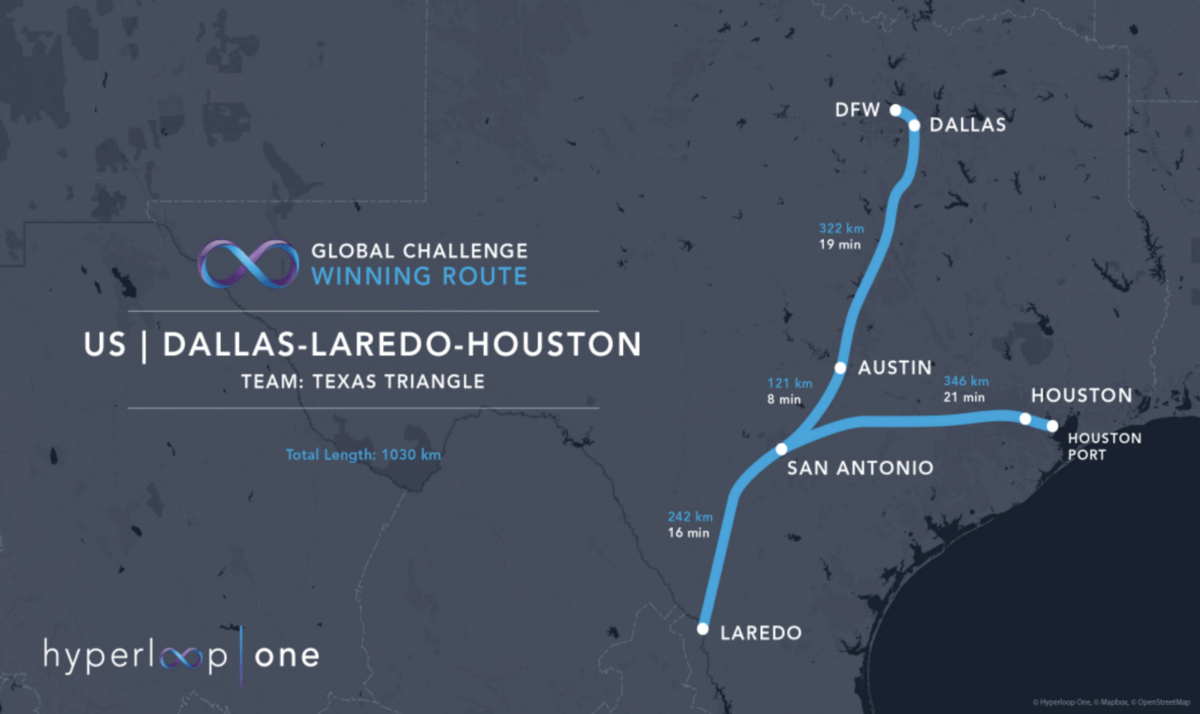Henry Grabar looks at trends in hyperloop development and notes an interesting trend.
Last year, I checked in with Hyperloop Transportation Technologies, a company that hopes to pioneer terrestrial transit at the speed of sound using a cadre of far-flung engineers collaborating on Google Docs. It has been two-plus years since HTT’s co-founder told Wired, “We’ve solved all the technical issues,” but the team has yet to test a full-scale prototype. That hasn’t stopped HTT from getting government funding from Ohio to the Chinese hinterland.
Something interesting is happening as HTT and other firms move forward with their plans: The Hyperloop is starting to look more familiar than space-age. The HTT car, for example, is not the bobsled-size carriage imagined by Musk, but closer to the size of a needle-nosed Shinkansen train car. That design choice brings the idea of Hyperloop infrastructure away from Musk’s initial vision of a nimble, easy-to-build pipeline and closer to the costly, time-consuming right-of-way whose pursuit characterizes the construction of roads and railways.
The vehicle isn’t the only part of the Hyperloop that’s coming to resemble more traditional transportation options.
Recently, I sat down with Josh Geigel, the co-founder and chief technology officer of Virgin Hyperloop One, the more serious Hyperloop venture. What Hyperloop One has going for it is an actual test track where reporters have been invited to watch a pod achieve speeds of 240 miles per hour.
But that’s just the technology. As a transportation solution, Hyperloop One is starting to lay down some parameters on what will and won’t work. (It may be the influence of CEO Jay Walder, who ran transit systems in Hong Kong and New York.) Carrying small numbers of people, as the initial concept aimed to do? “I can’t imagine a system moving less than 4,000–5,000 people an hour and paying for itself,” Geigel said. Routes stretching across the country? The sweet spot, said Geigel, would be under 200 miles.
When Geigel outlined how his tubes would load up 16,000 passengers per hour on its first projected route near Mumbai—a carrying capacity approaching the Tokyo–Osaka Shinkansen, the world’s busiest high-speed train line—he explained that the system would launch “convoys” of “pods” that would leave the hub together and wind up in different destinations.
In short, Hyperloop One’s project is beginning to sound a bit like a high-speed rail line. Not coincidentally, Geigel is now estimating the system costing 60 to 70 percent the cost of high-speed rail—not, as Musk once projected, 10 percent or less.
Yeah, that’s not what I was expecting, either. Still pretty cool, but not what I was envisioning. How much that may change the competitive landscape for high speed rail versus hyperloop, I couldn’t say. Clearly, we’re going to need one of these things to finish getting built so we can do a real comparison. Hurry up, y’all.


“competitive landscape” lol. Even at Texas Central’s ridiculously jacked up ridership numbers they don’t get near the 4,000 to 5,000 people an hour quoted in the story for the allegedly cheaper hyperloop to pay for itself.
Hyperloops are complete vaporware at the moment, and likely to remain that way for a couple of decades. High speed rail is a proven technology that actually works, it could cost 50% of what it currently does if the US could build transport infrastructure structure at the prices the Europeans and Japanese do. Given we as a country pay triple the gdp amount on healthcare for worse outcomes I doubt we’re going to get cost control, or much fast ground transportation, anytime soon.